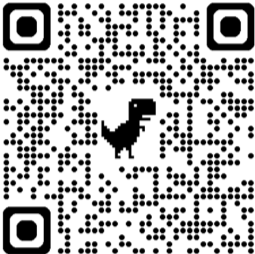Acquired Disorders of the Brain (Game 2020)
Online Game: Acquired Disorders of the Brain (2020).
Create multiple-choice games on Wisc-Online and play them on our Chakalaka mobile app!
But that's not all! Explore educational games created by others. Simply search by category or enter agame code number and dive into a world of learning and fun.
Download the Chakalaka mobile app here:

Topics of this game:
- Responsible for movement/coordination, balance, and posture
- Receives all sensory information and sends it to the cortex
- Type of imaging that shows subtle changes in white matter (axons) and detects subtle changes in the movement of water molecules
- ____ return to activity after a concussion is associated with better recovery and less prolonged recovery than absolute rest.
- There are currently no _______ to modify the neurometabolic activity going on in the cases of concussion.
- _____ scans show changes in tissue density.
- _______ changes occur as a result of forces acting upon the brain.
- A brain injury caused by a direct blow to the head, face, neck, or elsewhere in the body that transmits the force to the head
- Concussions are also known as this
- This gender is more likely to suffer cognitive consequences from a concussion
- This is a type of aphasia where the output is often very limited, missing many grammatical markers
- The most common causes in younger children and older adults of TBIs are this
- Denial of deficits or and/or lack of awareness of deficits
- Increased muscle mass is a ____ physiological change associated with maturation.
- ______ is the difficulty recognizing familiar faces despite preserved object recognition.
- Refined pragmatic skills are a type of typical _____ change associated with maturation.
- The type of protein that is the pathology associated with Chronic Traumatic Encephalopathy
- ______ adults is the largest population segment with TBI, have a higher mortality rate and more complications.
- Discrimination against individuals solely due to age
- _____ affect Functional Reserve.
- Initial impact on the brain is called a _____ injury.
- Injuries that result from significant pressure changes affecting air and fluid filled areas of the body
- Injuries that usually include a skull fracture and makes the brain more vulnerable to infection
- A type of primary injury; an example of an injury occurring at the time of the impact
- A type of secondary injury; defined as a collection of blood; described by its location
- Lack of arousal/response that results from damage to the reticular formation
- Common after any type of brain injury; abnormal electrical discharge of cortical neurons
- Level of Ranchos Los Amigos Levels of Cognitive Functioning in which there is no patient response
- Coma ____ is a type of assessment should be used be used as therapy for low level patients; also called multisensory stimulation
- Therapy approach used with highest level patients; patients predict the outcomes of tasks they are about to perform
- These type of assessments provides scores, but do not provide information about how the patient will function in the real world
- This involves shaving the portion of the head, exposing the dura, removal of the clot, repairing the artery, and irrigation
- This type of medication reduces the metabolic demands of the brain; "slow it down"
- Type of triage that does not treat those who are most severe first; treat those who are the most "savable"
- Recalls of events in time is _____ memory.
- Storage of concepts/other information without regard to context is ____ memory.
- "The Four D's" include; Delirium, Depression, Drugs, _______.
- The proteins between nerve cells in the brain are called _____ plaques.
- The protein fibers inside the brain cells are called _________ tangles.
- You aspirate the most during _____.
- How many cranial nerves are involved in swallowing?
- _______ is a swallowing disorder occuring as a result of neurological or structural problem.
- There are four options for liquid consistancies; think, nectar, honey and ______.
- While sleeping you mostly aspirate ______.
- Alzheimer's was first described in 1906/1907 by _____ Alzheimer.
- Cognition is an _______ for everything we do.
- _____ memory is your short term/holding space in your brain.
- _______ memory is knowing "that". Recollection of info and being conscious of that knowledge
- ______ memory is knowning "how". Knowing how to do something but not being conscious of that knowledge
- 600 times is about how many times do you swallow during this time frame
User comments are currently unavailable. We apologize for the inconvenience and are working to restore this feature as soon as possible.

